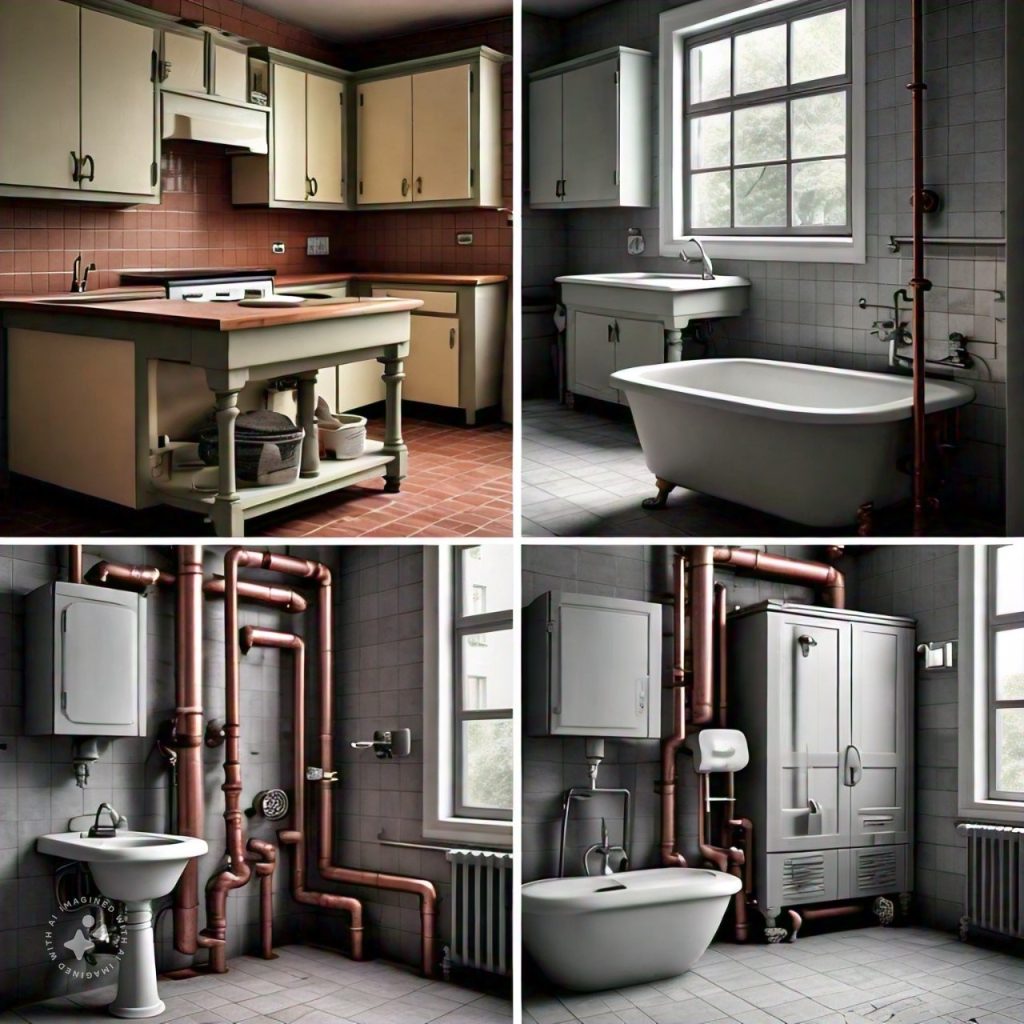Plumbing systems are essential to the functionality and comfort of any home. When it comes to kitchen and bathroom plumbing, there are similarities as well as significant differences that homeowners should be aware of. Understanding these nuances can help in maintaining these critical areas effectively and making informed decisions during renovations or repairs. This article explores whether kitchen plumbing is the same as bathroom plumbing, examining the components, layouts, and unique considerations of each.
Kitchen and bathroom plumbing share some basic principles but also have distinct differences due to the unique functions of each room. While both involve water supply and drainage systems, the fixtures, appliances, and specific plumbing needs vary significantly.
Table of Contents
ToggleCommon Components in Kitchen and Bathroom Plumbing
Water Supply Lines
Both kitchen and bathroom plumbing systems rely on water supply lines to deliver clean water to faucets, appliances, and other fixtures. These lines are typically made from materials such as copper, PEX (cross-linked polyethylene), or CPVC (chlorinated polyvinyl chloride).
Drainage Systems
The drainage systems in both kitchens and bathrooms are designed to remove wastewater efficiently. They include drain pipes, traps, and vent pipes. The pipes are usually made from PVC (polyvinyl chloride) or ABS (acrylonitrile butadiene styrene), which are durable and resistant to corrosion.
Shutoff Valves
Both areas have shutoff valves for controlling the water flow to individual fixtures. These valves are crucial for maintenance and emergency repairs, allowing the water supply to be turned off without affecting the entire house.
Differences Between Kitchen and Bathroom Plumbing
Fixture Types and Requirements
- Kitchen Plumbing:
- Sinks: Kitchen sinks are typically larger and deeper than bathroom sinks. They may have additional features like garbage disposals and spray hoses.
- Dishwashers: Integrated with the plumbing system to supply hot water and drain wastewater.
- Refrigerators: Some refrigerators require a water line connection for ice makers and water dispensers.
- Pot Fillers: High-mounted faucets near the stove for filling large pots directly on the stove.
- Bathroom Plumbing:
- Sinks: Bathroom sinks are usually smaller and can come in various styles such as pedestal, undermount, or wall-mounted.
- Toilets: Require a dedicated water supply line and a specific type of drainage system to handle waste.
- Bathtubs and Showers: Require both hot and cold water supply lines, as well as specialized drainage systems to handle large volumes of water.
- Bidets: Increasingly common in modern bathrooms, requiring additional plumbing for water supply and drainage.
Hot Water Demand
- Kitchen: High demand for hot water, especially for dishwashing and cooking purposes. Often includes an instant hot water dispenser.
- Bathroom: Hot water is essential for bathing and showering, often requiring a continuous and robust supply.
Drainage Considerations
- Kitchen: Grease and food particles can cause clogs. Many kitchens are equipped with garbage disposals to help break down food waste before it enters the drainage system.
- Bathroom: Hair and soap scum are common culprits of clogs. Bathroom drains are often fitted with strainers to prevent debris from entering the plumbing system.
Layout and Design Differences
Pipe Routing
- Kitchen: Plumbing is often centralized around the sink, with additional lines for appliances like dishwashers and refrigerators. Pipe routing can be more complex due to the inclusion of multiple appliances.
- Bathroom: Plumbing layout is typically more dispersed, with separate supply and drainage lines for sinks, toilets, showers, and bathtubs. Bathrooms often have more intricate venting systems to ensure proper drainage and prevent sewer gas buildup.
Venting
Venting is crucial in both kitchen and bathroom plumbing to allow air to enter the drainage system and prevent negative pressure that can cause slow draining or siphoning of traps.
- Kitchen: Venting is usually straightforward, with vent pipes connected to the main stack.
- Bathroom: Often more complex due to multiple fixtures requiring venting. Each fixture typically needs its own vent, leading to a more intricate network of vent pipes.
Unique Considerations for Kitchen Plumbing
Garbage Disposals
Garbage disposals are a unique feature of kitchen plumbing, designed to grind food waste into small particles that can be flushed through the plumbing system. They require a power source and can complicate the plumbing layout under the sink.
Dishwasher Connections
Dishwashers need to be connected to both the water supply and the drainage system. The drainage hose is typically connected to the garbage disposal or directly to the sink drain.
Water Filters
Many kitchens are equipped with water filtration systems for drinking water and ice makers. These systems require additional plumbing connections and regular maintenance to ensure clean water supply.
Unique Considerations for Bathroom Plumbing
Toilets
Toilets have unique plumbing requirements, including a dedicated water supply line and a specialized waste line that connects to the main sewer or septic system. They also have specific venting requirements to prevent sewer gases from entering the home.
Showers and Bathtubs
Showers and bathtubs require both hot and cold water supply lines, and their drainage systems must be able to handle large volumes of water quickly. Additionally, they need proper sealing and waterproofing to prevent leaks and water damage.
Ventilation
Proper ventilation is crucial in bathrooms to prevent mold and mildew growth due to high humidity levels. While this isn’t directly part of the plumbing system, it’s an important consideration in bathroom design and maintenance.
Maintenance and Common Issues
Kitchen Plumbing Maintenance
- Regular Cleaning: Prevent clogs by regularly cleaning sink drains and garbage disposals.
- Check for Leaks: Inspect under-sink plumbing for signs of leaks and corrosion.
- Garbage Disposal Care: Run cold water while using the disposal and avoid disposing of grease or fibrous foods.
Bathroom Plumbing Maintenance
- Drain Cleaning: Regularly clean drains to prevent hair and soap buildup.
- Inspect Seals: Check the seals around bathtubs and showers to prevent leaks.
- Toilet Maintenance: Ensure toilets are flushing properly and inspect for leaks around the base and tank.
Conclusion
While kitchen and bathroom plumbing share some similarities, they have distinct differences due to the unique requirements of each space. Kitchens typically have more complex plumbing needs due to the variety of appliances and fixtures, while bathrooms require specialized systems for toilets, showers, and bathtubs. Understanding these differences can help homeowners maintain their plumbing systems effectively and make informed decisions during renovations or repairs. Proper maintenance and attention to the unique aspects of each system can ensure the longevity and efficiency of both kitchen and bathroom plumbing.

